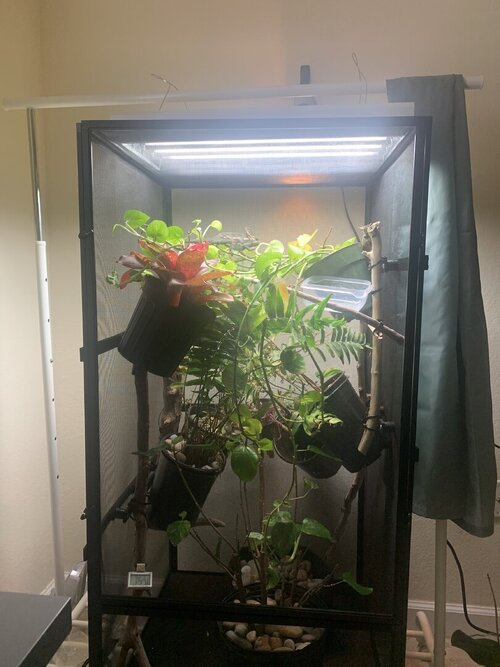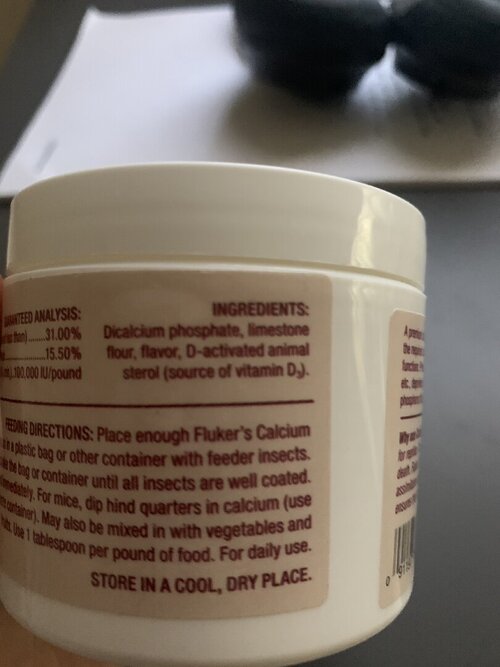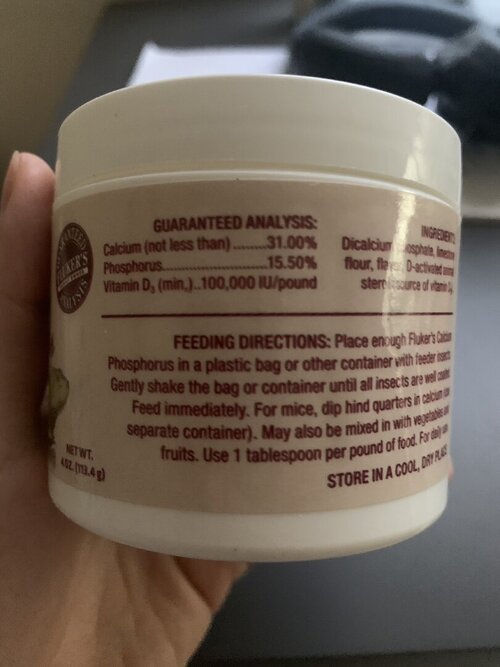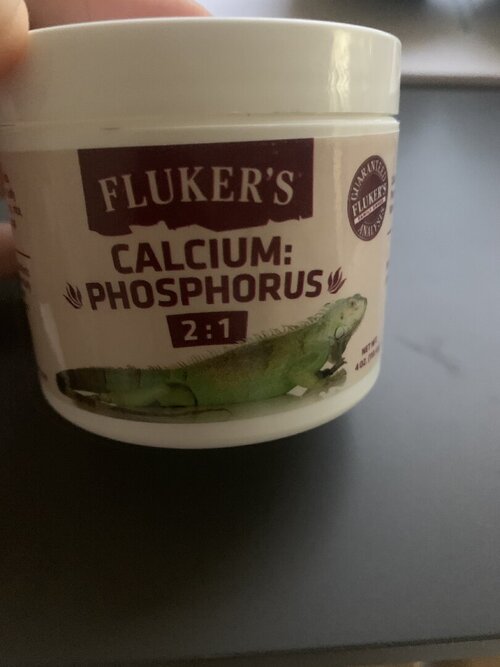Wisto&Co
Established Member
Hi all--I have been reading the threads on here, and wanted to make sure I made any husbandry changes since my chameleon Wisto hasn't been acting as usual lately (gaping last 2 or 3 days). Sorry for the long post but hopefully it has all the info needed. I would very much appreciate a review if possible, and thank you in advance for any advice
Current Problem - The current problem you are concerned about.
He has been gaping recently (not putting his nose in the air that I saw, no discharge that I can see, and no rasping/other sounds when his mouth is open). While he was gaping I took a look inside, and couldn’t see any bumps/anything else noticeable to me. I went to the vet yesterday, and they found no evidence of a respiratory infection and said that there wasn’t anything that concerned the vet on the gaping (did say something about blood tests but it was vague).
They told me to check if the basking lamp was too hot, but it has been the same setup since the start and he has never gaped before. I read on Chameleon Academy that the basking light should only be left on for some time in the morning, but then turned off. The vet told me that the basking light should be on all day (7 am to 7 pm) when I took Wisto to see him for a first checkup. I’m not sure which of the two are correct—I did the first approach until the vet visit, then switched to the second after that. Right now, I turned the basking light off to see if that was the reason for the gaping (for an hour or so, then turned back on when he was waiting on his basking branch) but he's been gaping regardless. He has been eating about 9 insects these days (and it takes a bit of time), while before he ate more than that and very quickly (all crickets fed gone in a matter of minutes). Lastly, he has been screen walking lately which I’ve been trying to resolve too
Chameleon Info:
Cage Info:
Current Problem - The current problem you are concerned about.
He has been gaping recently (not putting his nose in the air that I saw, no discharge that I can see, and no rasping/other sounds when his mouth is open). While he was gaping I took a look inside, and couldn’t see any bumps/anything else noticeable to me. I went to the vet yesterday, and they found no evidence of a respiratory infection and said that there wasn’t anything that concerned the vet on the gaping (did say something about blood tests but it was vague).
They told me to check if the basking lamp was too hot, but it has been the same setup since the start and he has never gaped before. I read on Chameleon Academy that the basking light should only be left on for some time in the morning, but then turned off. The vet told me that the basking light should be on all day (7 am to 7 pm) when I took Wisto to see him for a first checkup. I’m not sure which of the two are correct—I did the first approach until the vet visit, then switched to the second after that. Right now, I turned the basking light off to see if that was the reason for the gaping (for an hour or so, then turned back on when he was waiting on his basking branch) but he's been gaping regardless. He has been eating about 9 insects these days (and it takes a bit of time), while before he ate more than that and very quickly (all crickets fed gone in a matter of minutes). Lastly, he has been screen walking lately which I’ve been trying to resolve too
- When/how long should the basking light be on?
- Would a blood test help diagnose whether he has a respiratory infection?
- Any other changes to husbandry that you would recommend?
Chameleon Info:
- Your Chameleon- The species, sex, and age of your chameleon. How long has it been in your care?
- Veiled chameleon
- Male (given the spurs, but didn’t get confirmation outside of this)--picture attached
- Unsure since he was wild caught in Florida, but definitely still a young one since he’s been growing fast (<1 year old I would think)
- I have had him since October 23rd of 2022 / 4 months
- Handling- How often do you handle your chameleon?
- Usually once a day for a couple of minutes to feed him (I transfer him to a butterfly enclosure to feed him crickets since his main cage is inside, and to get some sun)
- I switched to feeding him from a cup inside his cage since today, given veileds’ stress from handling
- Feeding- What are you feeding your cham? What amount? What is the schedule? How are you gut-loading your feeders?
- 10 crickets and 5 or so mealworms a day, or 1 superworm (once a week) with 3 or 4 crickets, and isopods for variety (powder blue/orange and dairy cow varieties). Occasionally 1 or 2 waxworms as a treat. I gave him a small hornworm once, but he can’t eat the larger ones so haven’t fed them to him since
- I feed him in the morning (before noon), once he’s had a chance to warm up--around 11 am or at least before noon
- Started feeding more since yesterday (was about 10 insects per day before then) after the got back from the vet since he said he’s underweight.
- Gutloading (based on Sandrachameleon's blogs):
- wet gutload - mustard greens, squash, papaya, swiss chard, etc. mixed together in a food processor
- dry gutload: wheatgrass powder, kale powder, bee pollen, millet, nori seaweed, brewer’s yeast, etc.
- Supplements- What brand and type of calcium and vitamin products are you dusting your feeders with and what is the schedule?
- Repti Calcium without D3 at every feeding since yesterday, with Repashy Calcium Plus LoD every two weeks, dusted on feeders
- The vet told me to use 2:1 Phosphorus (Fluker's) and calcium twice a week (when first went to the vet), but I thought this wouldn’t be enough calcium. So I had been giving him the 2:1 mix once a week and plain calcium once a week
- I had been giving the plain calcium at every feeding before the first vet visit when we first had him, and went back to that since yesterday (after reading the threads on here)
- Watering- What kind of watering technique do you use? How often and how long to you mist? Do you see your chameleon drinking?
- I hand mist with a glass bottle of filtered water 3 times a day (morning before lights go on around 7 am, and evening before lights off at around 7 pm)
- About 2 minutes or more each time
- I’ve seen him drink from a leaf once so far
- Fecal Description- Briefly note colors and consistency from recent droppings. Has this chameleon ever been tested for parasites?
- Has been tested, but came out negative. Might be false negative because it wasn’t a fresh sample (didn’t know then that it needed to be)
- Poop is dark brown and not too hard, and urates are mostly white (either all white or some yellow/orange). Most recent sample had some water/urine too so hydration seems to be good. Sometimes poop is wrapped in leaves since he likes to eat off the ferns and pothos
- History- Any previous information about your cham that might be useful to others when trying to help you.
- He was being cared for temporarily by a someone who kept him in a butterfly enclosure on her porch/back outside of the house (she caught him in her garden and needed to find someone to take care of him). When we picked him up from there he was pretty dark (no lamps used, and not sure how much sun he got in a day)
- He was fed only mealworms straight from the box, not gutloaded as far as I know, and no supplements that I know of
- The vet yesterday told me that he has some bone density loss (seen from an X-ray they took to see if he had any gastrointestinal obstructions), so they are giving him weekly calcium injections for 6 weeks and I dust all feeders with calcium every day from now on (unless dusted with Repashy every two weeks)
Cage Info:
- Cage Type- Describe your cage (Glass, Screen, Combo?) What are the dimensions?
- 4’x4’x2’ screen cage from Zoo Med
- I drape a shower curtain over the cage at night to keep in humidity
- Lighting- What brand, model, and types of lighting are you using? What is your daily lighting schedule?
- Arcadia T5 6% UV-B (24 watt) mounted on VIVOSUN T5 Grow Lights Fixture (3 plant grow lights and 1 Arcadia bulb for the 4 slots)
- Exo Terra Daytime Heat Reptile lamp (60 watts) with Zoo Med Deep Dome Heat Fixture
- Temperature- What temp range have you created (cage floor to basking spot)? Lowest overnight temp? How do you measure these temps?
- 72F to 82F (measured by hygrometer/thermometer close to the floor and to basking spot)
- Overnight: have not been able to check inside the cage so I don't wake him up, but air conditioning is set to 78 usually so no higher than that (and sometimes lower with recent cold waves)
- Humidity- What are your humidity levels? How are you creating and maintaining these levels? What do you use to measure humidity?
- Live plants help maintain humidity, and I water the pothos at the top and fern in the middle nearly every day
- Also some from the spraying/misting
- In the day: between 50 and 70% humidity
- Overnight: 60 to 70% after misting before lights off
- Measured on the two hygrometer/thermometers I have at the top and bottom of the cage
- Live plants help maintain humidity, and I water the pothos at the top and fern in the middle nearly every day
- Plants- Are you using live plants? If so, what kind?
- Yes, all live plants
- Bromeliad, pothos, schlefflera, ferns, hibiscus, Tradescantia Zebrina, a small leafless tree for the branches, starfruit (currently leafless)
- Placement- Where is your cage located? Is it near any fans, air vents, or high traffic areas? At what height is the top of the cage relative to your room floor?
- It’s in my room / home office
- Not near any vents or fans
- Usually only I am in the room (most of the day and night, but will usually leave him alone for some time between 5 and 10 pm and for breaks during the day)
- The cage is about a foot off the floor, so top of the cage is about 5 feet off the floor
- Location- Where are you geographically located?
- Miami, Florida (US)
Attachments
-
 First few days with us.jpeg55.9 KB · Views: 154
First few days with us.jpeg55.9 KB · Views: 154 -
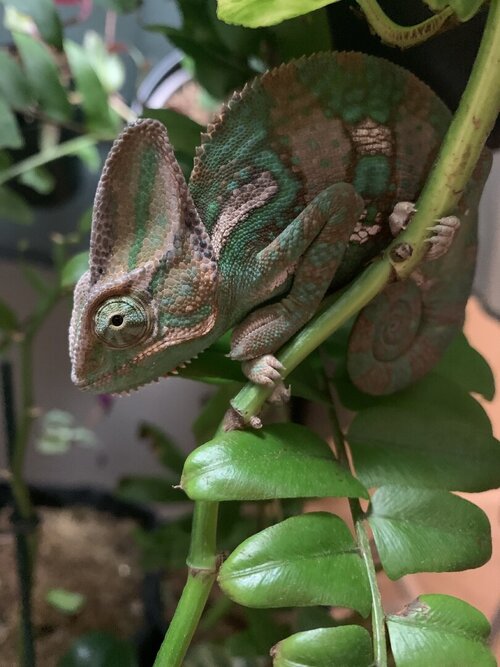 Older pic when was doing well.jpg143.8 KB · Views: 143
Older pic when was doing well.jpg143.8 KB · Views: 143 -
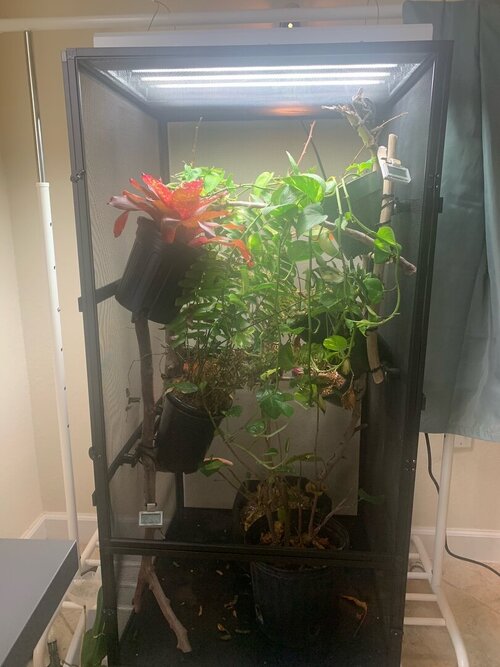 Cage setup.jpeg134.2 KB · Views: 140
Cage setup.jpeg134.2 KB · Views: 140 -
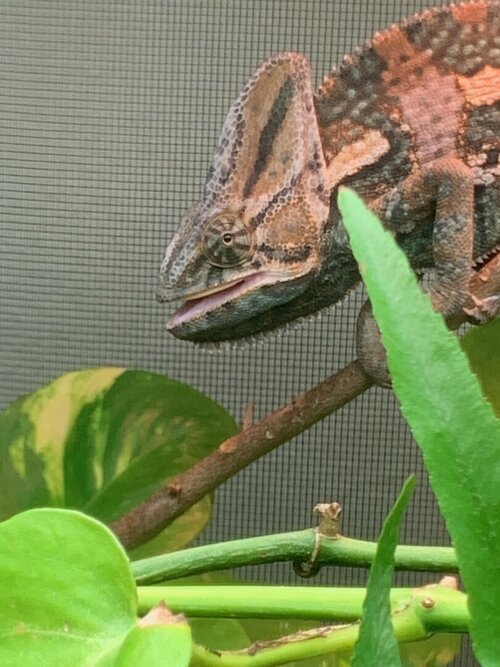 Gaping closeup.jpeg159.5 KB · Views: 157
Gaping closeup.jpeg159.5 KB · Views: 157 -
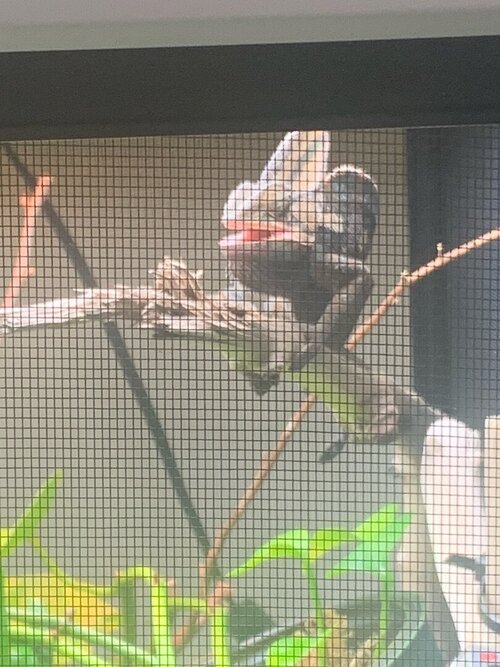 Gaping away from basking lamp.jpeg197.4 KB · Views: 149
Gaping away from basking lamp.jpeg197.4 KB · Views: 149 -
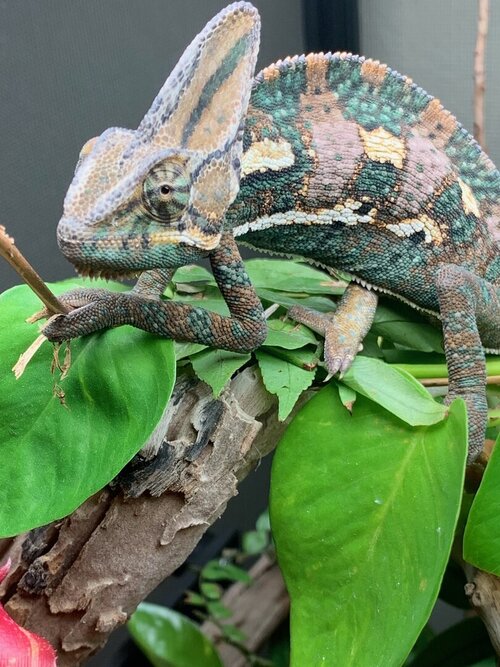 Yesterday or so.jpeg215 KB · Views: 153
Yesterday or so.jpeg215 KB · Views: 153 -
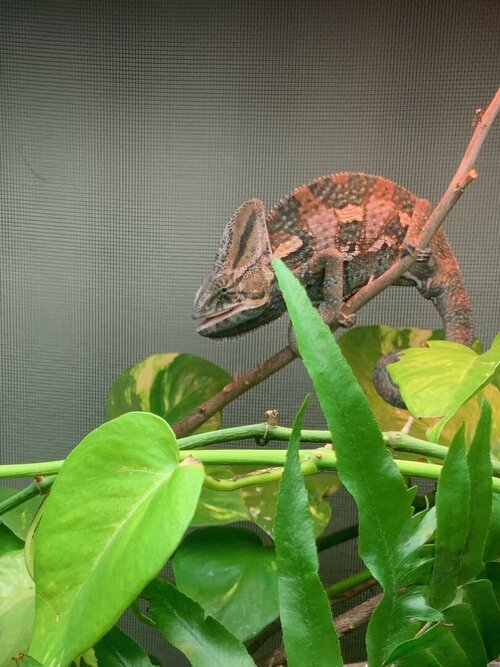 Gaping.jpeg177.4 KB · Views: 152
Gaping.jpeg177.4 KB · Views: 152 -
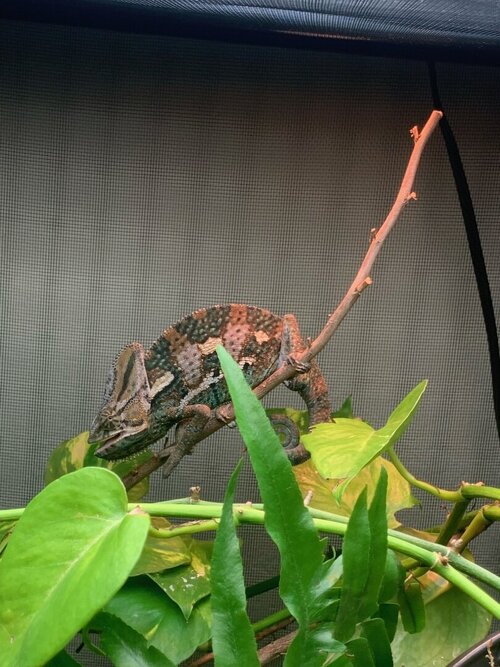 Gaping relative to basking lamp.jpeg194.9 KB · Views: 141
Gaping relative to basking lamp.jpeg194.9 KB · Views: 141 -
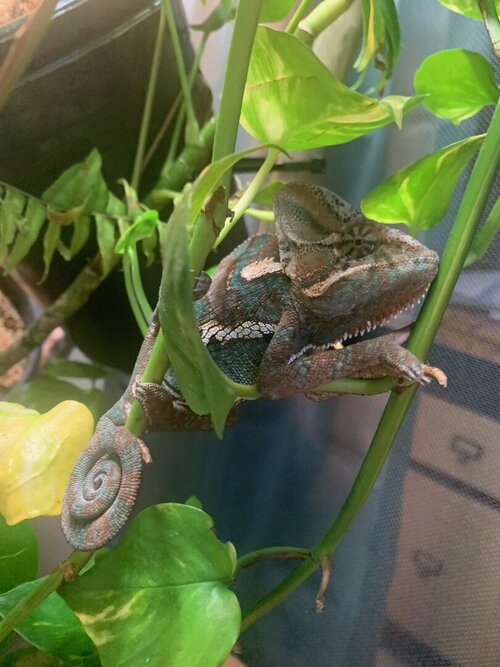 Recent Pic from today.jpeg140.7 KB · Views: 151
Recent Pic from today.jpeg140.7 KB · Views: 151 -
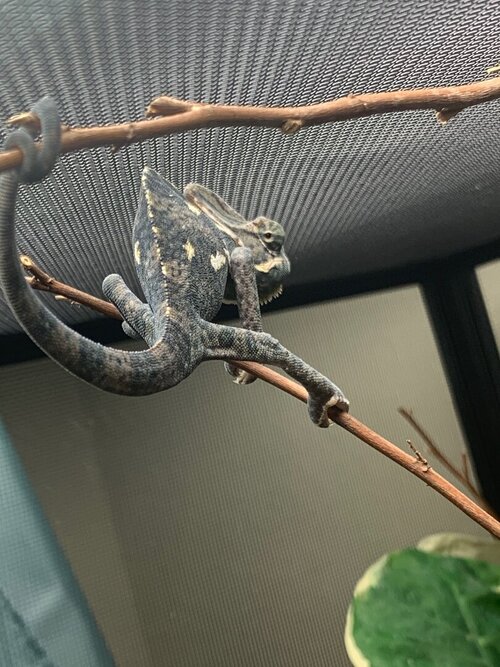 Heel spur.jpeg206.6 KB · Views: 153
Heel spur.jpeg206.6 KB · Views: 153






